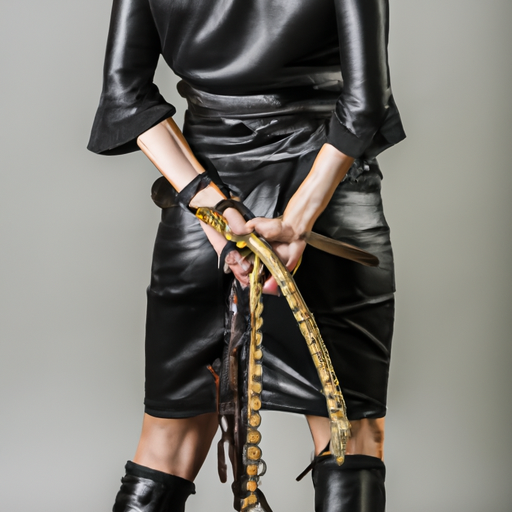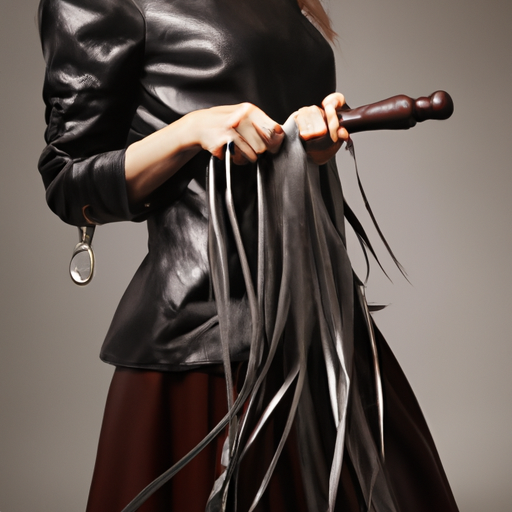In the realm of human relationships, there exists a vast array of dynamics and roles that shape the way individuals interact with one another. One such dynamic that has gained attention and intrigue is the realm of femdom relationships. Femdom, short for female dominance, refers to a relationship where the female partner takes on a dominant role, while the male partner assumes a submissive position. These relationships can be consensual, built on trust, and grounded in mutual respect. Within the realm of femdom relationships, there are several common character archetypes or roles that often emerge. Let us explore some of these archetypes and the dynamics they bring to these unique relationships.

The Dominant Mistress: The dominant mistress is the central figure in the femdom relationship. She is confident, assertive, and takes charge of the relationship. She sets the rules, establishes boundaries, and exercises control over her submissive partner. The dominant mistress may engage in various activities such as bondage, discipline, and even role-playing scenarios to assert her dominance.
The Submissive Slave: The submissive slave willingly surrenders control to the dominant mistress. He derives pleasure from serving and obeying her. The submissive slave may engage in acts of submission, such as performing household chores, running errands, or engaging in specific rituals to please his dominant partner. The submissive slave finds fulfillment in relinquishing control and finding solace in his submission.
The Bratty Submissive: The bratty submissive adds a playful and mischievous twist to the femdom dynamic. This archetype challenges the dominant mistress and pushes her boundaries. While still submitting to her authority, the bratty submissive may engage in teasing, disobedience, or playful resistance to elicit a response from the dominant partner. The bratty submissive seeks a balance between submission and a playful power struggle.
The Training Submissive: The training submissive is often new to the world of femdom relationships. They are eager to please and learn from their dominant partner. The training submissive embraces guidance, instruction, and discipline from the dominant mistress, as they seek to grow in their understanding and experience of submission. The training submissive may engage in rituals, tasks, or even punishment to improve their obedience and devotion.
The Caring Domme: The caring domme brings a nurturing and compassionate aspect to the femdom dynamic. While still in control, she takes on a more gentle and supportive role. The caring domme values communication, emotional connection, and the well-being of her submissive partner. She may engage in acts of aftercare, providing emotional support and reassurance after intense scenes or sessions.
It is important to note that these archetypes and roles are not exhaustive, and every femdom relationship is unique. Communication, consent, and trust are the pillars upon which these relationships are built. It is crucial for individuals engaging in femdom relationships to have open and honest discussions about their desires, boundaries, and expectations.
In conclusion, femdom relationships encompass a diverse range of character archetypes and roles. From the dominant mistress to the submissive slave, each role brings its own dynamics and interactions to the relationship. It is through mutual understanding, communication, and consent that femdom relationships thrive. As society continues to evolve, it is essential to approach these dynamics with respect, understanding, and an appreciation for the diverse ways in which individuals express their desires and explore their sexuality. View it.
What are some common misconceptions or stereotypes that BDSM comics aim to debunk?
In recent years, bdsm comics have gained popularity and have become a medium to explore the intricacies of human sexuality, power dynamics, and personal desires. Unfortunately, there are many misconceptions and stereotypes surrounding BDSM, and bdsm comics aim to debunk these misconceptions by showcasing the reality of this lifestyle. In this blog post, we will explore some of the common misconceptions and stereotypes that BDSM comics aim to debunk.

Misconception 1: BDSM is abusive or violent.
One of the most prevalent misconceptions about BDSM is that it is inherently abusive or violent. BDSM comics challenge this misconception by depicting consensual and negotiated power dynamics between partners. These comics emphasize the importance of communication, trust, and consent in BDSM relationships, highlighting that any form of abuse or violence goes against the core principles of BDSM.
Misconception 2: BDSM is only about pain and punishment.
Another common stereotype is that BDSM is solely focused on pain and punishment. BDSM comics challenge this misconception by showcasing the wide range of activities and dynamics within the BDSM community. These comics explore themes of dominance and submission, bondage, discipline, role-playing, and more, illustrating the vast spectrum of desires and interests that individuals engage in within the BDSM lifestyle.
Misconception 3: People engaged in BDSM are psychologically damaged.
This stereotype assumes that individuals who engage in BDSM have experienced trauma or have psychological issues. BDSM comics aim to debunk this misconception by portraying individuals involved in BDSM as healthy, consensual, and self-aware. These comics emphasize the significance of consent, boundaries, and open communication in BDSM relationships, emphasizing that engaging in BDSM is a personal choice, not a reflection of one’s psychological well-being.
Misconception 4: BDSM is only for heterosexual couples.
BDSM comics challenge the stereotype that BDSM is exclusively for heterosexual couples by portraying a diverse range of characters and relationships. These comics showcase same-sex couples, polyamorous relationships, and explore the fluidity of gender and sexual orientations within the BDSM community. By doing so, these comics aim to present BDSM as an inclusive and accepting space for all individuals, irrespective of their sexual orientation or relationship status.
Misconception 5: BDSM is degrading to women.
A prevalent stereotype is that BDSM is degrading to women, perpetuating the idea that women are passive victims in these relationships. BDSM comics actively debunk this misconception by featuring strong, empowered, and enthusiastic female characters who actively participate in and enjoy BDSM activities. These comics emphasize the importance of consent, agency, and empowerment for all individuals involved in BDSM relationships, challenging the notion that women are merely objects of male desire.
In conclusion, BDSM comics serve as a powerful medium to debunk the misconceptions and stereotypes surrounding BDSM. By showcasing consensual, negotiated power dynamics, emphasizing communication and trust, and portraying a diverse range of characters and relationships, these comics challenge societal assumptions and provide an authentic representation of the BDSM lifestyle. It is crucial to educate ourselves and approach BDSM with an open mind, free from judgment and prejudice, in order to foster a more inclusive and understanding society.